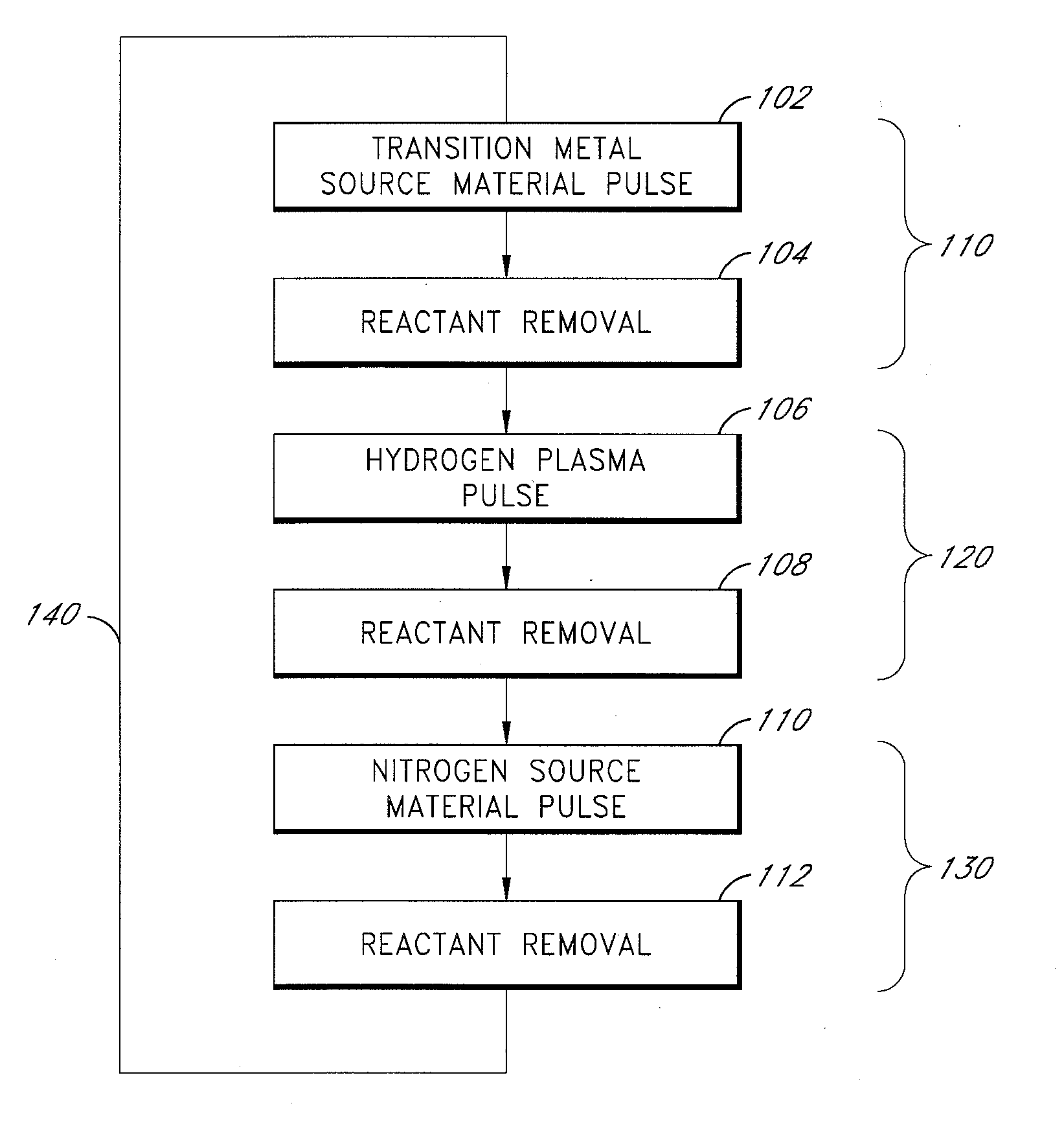Plasma-enhanced ald of tantalum nitride films
a technology of tantalum nitride and plasma, which is applied in the direction of coating, metallic material coating process, chemical vapor deposition coating, etc., can solve the problems of affecting the electrical properties of the ic, difficult to obtain complete film coverage on the deep bottom and via, and prone to diffusion or electromigration
- Summary
- Abstract
- Description
- Claims
- Application Information
AI Technical Summary
Problems solved by technology
Method used
Image
Examples
example
[0073]A conductive tantalum nitride film was deposited on a 300 mm silicon wafer in a PEALD reactor from ASM Genitech, Inc. Deposition was conducted at a substrate temperature of about 300-350° C. and a TaF5 source gas temperature of about 93° C. Hydrogen (H2) plasma and ammonia (NH3) were used as the reducing agent and nitrogen source material, respectively. H2 plasma was generated by pulsing H2 into the reactor and supplying power to a plasma generator (1 KW, 13.56 MHz) while holding the plasma power at about 400 W. The sequence of gas pulses and pulsing times (milliseconds, “ms”) are as follows:
[0074](1) TaF5 pulse (900 ms);
[0075](2) Ar purge (3000 ms);
[0076](3) H2 Plasma pulse (2000-4000 ms);
[0077](4) Ar purge (2000 ms);
[0078](5) NH3 pulse (1000-4000 ms); and
[0079](6) Ar purge (6000 ms);
[0080]Steps (1)-(6) were repeated until a conductive tantalum nitride film of thickness between about 40 nm and 70 nm was formed on the substrate. During the pulsing sequence, a throttle valve wa...
PUM
| Property | Measurement | Unit |
|---|---|---|
| feature sizes | aaaaa | aaaaa |
| thickness | aaaaa | aaaaa |
| thickness | aaaaa | aaaaa |
Abstract
Description
Claims
Application Information
 Login to View More
Login to View More - R&D
- Intellectual Property
- Life Sciences
- Materials
- Tech Scout
- Unparalleled Data Quality
- Higher Quality Content
- 60% Fewer Hallucinations
Browse by: Latest US Patents, China's latest patents, Technical Efficacy Thesaurus, Application Domain, Technology Topic, Popular Technical Reports.
© 2025 PatSnap. All rights reserved.Legal|Privacy policy|Modern Slavery Act Transparency Statement|Sitemap|About US| Contact US: help@patsnap.com


